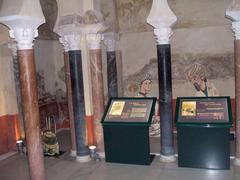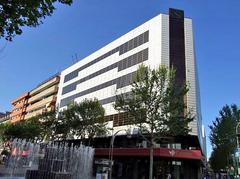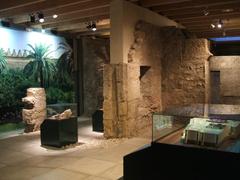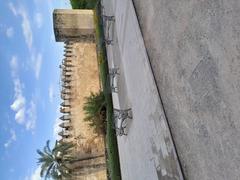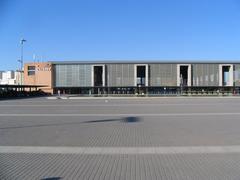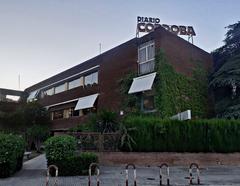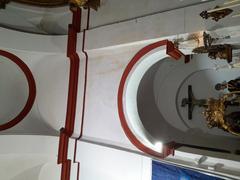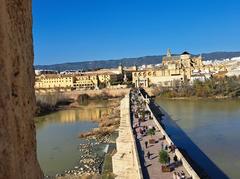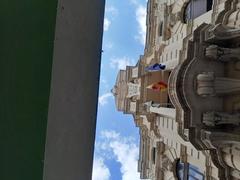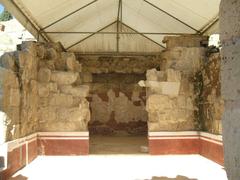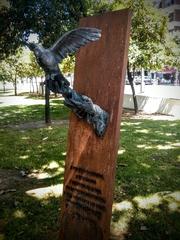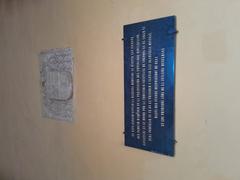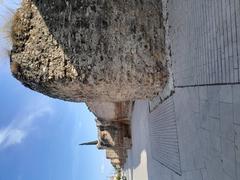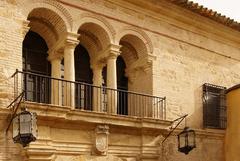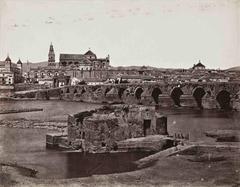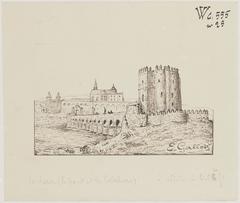Roman Theatre of Córdoba: Visiting Hours, Tickets, and Historical Sites Guide
Date: 04/07/2025
Introduction
Nestled in Córdoba’s vibrant historic center, the Roman Theatre of Córdoba is a monumental testament to the city’s Roman heritage. Built during the reign of Emperor Augustus in the 1st century BCE, the theatre was among the largest in Roman Hispania, accommodating up to 15,000 spectators. Ingeniously constructed into a natural hillside, the theatre not only entertained but also symbolized the cultural and political power of the Roman Empire (artencordoba.com; fascinatingspain.com).
Today, visitors can explore its partially excavated remains integrated within the Archaeological and Ethnological Museum of Córdoba, which offers a unique blend of archaeological immersion and modern exhibition. This guide provides essential details on visiting hours, ticket options, accessibility, historical context, and recommendations for making the most of your visit. Whether you’re a history enthusiast, architecture lover, or curious traveler, this guide will help you experience one of Spain’s most captivating Roman monuments (museosdeandalucia.es; turismodecordoba.org).
Table of Contents
- Introduction
- Historical and Architectural Overview
- Visiting the Roman Theatre of Córdoba
- Preservation and Modern Interpretation
- Nearby Attractions
- Frequently Asked Questions (FAQ)
- Visual and Interactive Resources
- References and Further Reading
- Conclusion
Historical and Architectural Overview
Urban Design and Construction
The Roman Theatre of Córdoba was a product of the city’s transformation into a model Roman metropolis. Built on a natural slope, the cavea (tiered seating) was carved into the hillside for stability, while the orchestra and stage were positioned near what is now Jerónimo Páez Square, under the current Archaeological Museum (artencordoba.com). The cavea measured about 125 meters in diameter—just six meters smaller than Rome’s Theatre of Marcellus—and could host up to 15,000 spectators, making it the largest known theatre in Roman Spain (fascinatingspain.com; itinerartis.com).
Roman engineers utilized local limestone and marble and incorporated advanced acoustic features to project performances throughout the open-air venue (to-spain.com). The theatre was intricately connected to other civic buildings, such as the Roman forum and Temple of Claudio Marcelo, reflecting its central role in public life (gpsmycity.com).
Roman Theatre in Civic Life
More than just an entertainment venue, the theatre was a hub where dramatic performances, musical events, and public ceremonies brought together citizens from all social strata. Its grand architecture projected Roman authority, fostered civic identity, and encouraged the adoption of Roman customs. The theatre also contributed to Córdoba’s artistic and intellectual reputation, laying the groundwork for future cultural flourishing (aithor.com; travelpander.com).
Visiting the Roman Theatre of Córdoba
Location and Access
The Roman Theatre is situated beneath the Archaeological and Ethnological Museum of Córdoba at Plaza Jerónimo Páez, 14003 Córdoba. The site is easily accessible on foot from major attractions like the Mezquita-Catedral, the Jewish Quarter, and Plaza de las Tendillas. For public transport, multiple city bus lines stop nearby. Limited parking is available, but walking is recommended due to the area’s narrow streets (turismodecordoba.org).
Visiting Hours
- Tuesday to Saturday: 9:00 AM – 9:00 PM
- Sundays and Public Holidays: 9:00 AM – 3:00 PM
- Closed: Mondays (except public holidays)
Note: Hours may vary on holidays; check the official museum website for updates.
Tickets and Pricing
- General Admission: Free for EU citizens; under €2 for non-EU visitors
- Guided Tours: May incur additional charges; recommended for deeper insights
- Booking: Advance booking is not usually required for individuals, but recommended for groups and guided tours
Accessibility
The museum and Roman Theatre exhibit are fully wheelchair accessible, with elevators and ramps connecting all levels. Facilities are designed to accommodate visitors with reduced mobility (turismodecordoba.org).
Visitor Experience & Tips
- What to Expect: The theatre’s remains are integrated into the museum’s basement—glass walkways, interpretive panels, multimedia presentations, and 3D reconstructions help visualize its original grandeur.
- Visitor Flow: Explore the museum’s upper galleries before descending to the theatre remains.
- Language: Bilingual interpretive materials (Spanish and English); audio guides may be available.
- Photography: Non-flash photography is allowed; tripods require permission.
- Duration: Allocate 60–90 minutes for the museum and theatre.
- Best Time to Visit: Weekday mornings are quieter. The museum’s climate control makes it a year-round destination, especially during Córdoba’s hot summers (joujoutravels.com).
- Facilities: Restrooms and a gift shop are available inside the museum. Numerous cafés and restaurants are nearby.
Preservation and Modern Interpretation
Rediscovered in the 1990s during museum expansion, about 30% of the theatre’s original footprint has been exposed. Integrated conservation ensures visitors experience the theatre’s grandeur in situ, while the museum provides broader context through Roman mosaics, sculptures, and inscriptions (artencordoba.com; fascinatingspain.com). Ongoing research and educational programs highlight Córdoba’s multi-layered heritage, connecting Roman, Visigothic, Islamic, Jewish, and Christian histories (aithor.com).
Nearby Attractions
The theatre’s central location makes it an ideal starting point for exploring other Córdoba historical sites:
- Mezquita-Catedral
- Alcázar de los Reyes Cristianos
- Roman Bridge
- Jewish Quarter (Judería)
- Temple of Claudio Marcelo
Frequently Asked Questions (FAQ)
Q: Are tickets required to visit the Roman Theatre of Córdoba?
A: Admission is included with the museum ticket (free for EU citizens; a small fee for others).
Q: What are the visiting hours?
A: Tuesday to Saturday, 9:00–21:00; Sundays and holidays, 9:00–15:00; closed Mondays except holidays.
Q: Is the site wheelchair accessible?
A: Yes, including elevators and ramps.
Q: Can I take photos?
A: Non-flash photography is allowed; tripods require permission.
Q: Are guided tours available?
A: Yes, in Spanish and occasionally English. Check the museum schedule.
Visual and Interactive Resources
Booking and Contact Information
- Address: Museo Arqueológico de Córdoba, Plaza de Jerónimo Páez, 14003 Córdoba, Spain
- Phone: +34 957 355 517
- Website: Museo Arqueológico de Córdoba
- Online Bookings: Recommended for groups and guided tours
For up-to-date hours, ticket prices, and events, consult the official museum website or the Córdoba tourism portal.
Conclusion
The Roman Theatre of Córdoba is more than an archaeological relic—it is a vibrant symbol of the city’s enduring connection to its Roman past. Thanks to thoughtful preservation and integration within the Archaeological Museum, the site offers an accessible, educational, and evocative experience for all visitors. Whether you’re exploring Córdoba’s Roman roots or seeking a deeper understanding of its layered history, the theatre is an essential stop. Combine your visit with nearby sites for a comprehensive journey through time, and consider using the Audiala app for immersive audio tours and real-time updates.
References and Further Reading
- Museo Arqueológico de Córdoba
- Córdoba Tourism
- Travel Córdoba – Roman Temple
- The Spain Travel Guru – Things to Do in Córdoba
- artencordoba.com
- fascinatingspain.com
- gpsmycity.com
- itinerartis.com
- to-spain.com
- aithor.com
- travelpander.com
- joujoutravels.com
- notaboutthemiles.com
